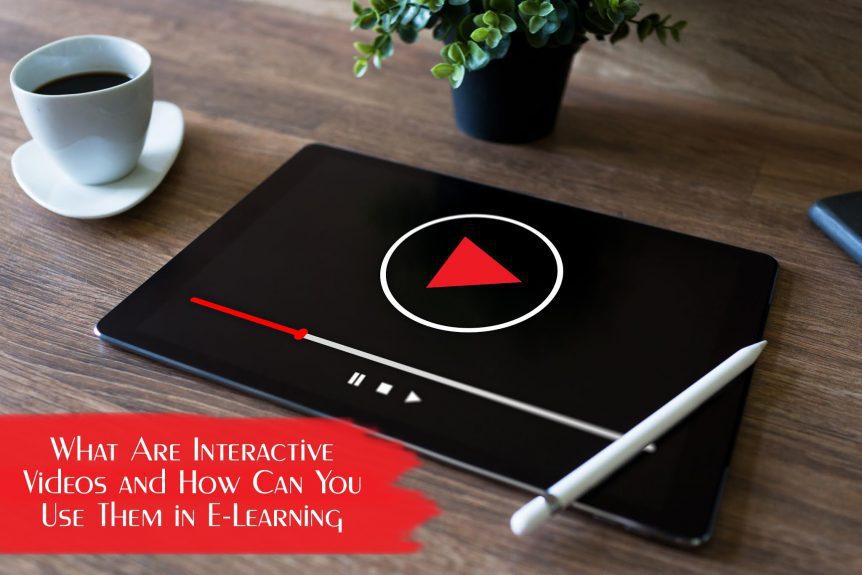What Are Interactive Videos and How Can You Use Them in E-Learning
Videos are a common feature in e-learning. They are used for a variety of purposes and come in a range of different forms. What about interactive videos, though?
Interactive videos are much less commonplace, but they can be extremely powerful when used in the right situations. They do require a greater level of expertise to develop and optimise, but they also deliver a significantly enhanced return on investment.
Why Are Videos Important?
Before looking at interactive videos, it’s important to quickly recap on why you should use videos in your e-learning courses, whether those videos are interactive or not. After all, the core benefits of using traditional videos provide the foundation for stepping up to the interactive kind.
Videos are important in e-learning because they increase the level of variety in a course’s content. Also, people generally like watching videos. To see this, you only have to look at the success of YouTube as well as the importance Facebook places on video.
Adding content variety to your e-learning courses using a medium that learners like increases engagement rates. This, in turn, improves outcomes, i.e. knowledge retention, learner satisfaction, enhanced business capabilities, etc.
What Are Interactive Videos?
Traditional videos are passive. The viewer can play, pause, and stop the video but apart from those very basic controls, all they do is watch and listen. So, while including videos in your e-learning courses will improve engagement rates, there is still a risk that learners will lose interest in the content. This problem is exacerbated if the video is long.
The other main problem with traditional videos is there is no way of checking whether the learner understands the points covered in the video. In fact, the learner can get lost at any stage of the video, making it difficult for them to catch up.
Interactive videos are not passive, so require a level of interactivity from the learner. From a visual perspective, you can add a range of different elements to interactive videos. This includes:
- Text overlays
- Images
- Labels
- Questions
- Options or polls
This makes the possibilities for interactive videos almost endless. Here are some examples:
- Scenarios – your entire video, or part of it, could be a scenario where you place the learner in a situation that closely mimics real life. The learner must then make a decision, clicking or taping on the video. The video can then proceed to reveal the consequences, outcome, or impact of the learner’s decision.
- Videos with multiple pathways – the above point introduces the concept of videos with multiple pathways. In other words, the section of the video immediately following the question in the example above will depend on the option the learner chooses. There are other practical adaptations of multiple pathways, however, including giving the learner more control over the order of the video’s content or deciding the content that is most applicable to them.
- Quizzes – you can also ask questions or use features like click to reveal on interactive videos, both of which can be formed into quizzes. This helps both you and the learner get a clearer understanding of whether or not the learner grasps the content.
Benefits of Interactive Videos
- Higher engagement rates – to progress through an e-learning course that has an interactive video, learners must actively engage, i.e. selecting answers, taking a decision, tapping to reveal the next section, etc. This in itself improves engagement rates. Interactive videos are also more interesting than their traditional counterparts, which increases levels of engagement further.
- Improved learner outcomes – specifically, interactive videos help learners fully understand the ideas, skills, and concepts presented in the e-learning course. This, in turn, helps the learner achieve their goal whether that is to upskill, improve performance, enhance productivity, or any other objective.
- Improved business outcomes – your business will benefit too, not least because the learner will better understand the content of the e-learning course. This will help you achieve your objectives for creating the course in the first place.
- Enhanced return on investment – following on from the last point, you’ll get better results from a course that has interactive videos which then translates to an enhanced return on investment.
- Higher levels of learner satisfaction – high levels of learner satisfaction help with your overall training strategy, particularly in relation to nurturing a learning culture in your company.
- Content is more tailored to the individual learner – as interactive videos don’t have to be linear, you can ensure the content is more tailored to learners. Having multiple pathways and/or endings in interactive videos are the best examples of this.
Implementing Interactive Videos in Your E-Learning Courses
Interactive videos are highly customised content pieces that require technical and educational skills to develop. This means you are likely to need the services of a professional e-learning developer in Dubai. As a result, they won’t be a suitable solution for all circumstances.
For key training courses where interactivity or customised content is important, however, interactive videos are the perfect solution.
